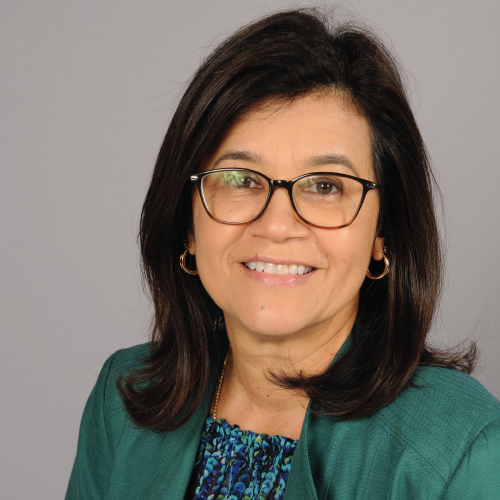Making the Most of Your Summer Fun(ds)— Preparing Educators for a Great Summer
March 28, 2024
This is a guest post from AASA 2023-24 president, Gladys Cruz.
Spring is here, which means summer is right around the corner! While spring break and spring testing are likely front-of-mind, it’s also time to begin planning and delivering professional development (PD) for your summer program. Teacher preparation is essential to success in the classroom during the school year, and summer is no different.
Summer PD should focus on what’s new or different for the summer, and with often limited time for live PD sessions, consider sharing content in formats and groupings that make sense for your district’s schedule.
Answer these key questions below, and you will be on your way to successful PD for summer.
What’s different about our summer curriculum and student population?
If the summer program is using the same academic curriculum as the school year, use summer PD and planning to help teachers zero in on certain standards or instructional strategies that meet targeted needs. PD can offer a chance for teachers to review student data and plan fresh standards-aligned lessons so that exact content from the school year isn’t repeated for students. If teachers have their summer class rosters and student data during PD, they can also think about grouping strategies and scaffolds in their curriculum to meet the needs of diverse learners.
If the summer program will be using a new or different curriculum, teachers will need dedicated time to learn and practice during PD. Ideally, teachers will begin learning the curriculum at least two months before the program begins to give them time to make adaptations, collaborate with their peers, request supplies, and practice new instructional strategies and content.
Beyond academics, consider if your teachers will be teaching a new enrichment subject or curriculum. Teachers need the same time to plan for high-quality enrichment as they do for academics.
What time and resources do we have available for PD?
It can be difficult to put additional meeting time on a teacher’s calendar. Instead, consider how regularly scheduled meetings or PD can be used to prepare for summer. Additionally, consider what content may be covered asynchronously through a recorded webinar or other self-paced format. If you have the resources (including remaining ARP ESSER funds), provide teachers with a stipend for their self-paced PD, and consider offering live or virtual office hours to answer any questions as they go. In addition to short meetings during the school year and self-paced options, plan for 1-2 full days of in-person PD before the program begins to bring the program’s culture and community to life. This Tip Sheet for Planning High-Quality Professional Development offers some additional prompts to guide your planning.
What content or activities need to take place in person, and what can be self-paced?
Make the most of everyone’s time. Cover things like logistics, policies, and procedures in writing ahead of live PD sessions. Develop a summer program handbook and track FAQs in a collaborative or online document that can be continually updated. Dedicate specific time for independent planning and processing as needed. With your in-person meeting time, prioritize interaction, conversation, and practice.
Explore these sample staff resources from the Summer Learning Toolkit:
Dallas Summer Staff Handbook: A comprehensive guide on summer learning policy and governance for staff.
- Guidance (.pdf)
- Sample (.pdf)
- Download All (.zip)
Pittsburgh Site Leadership Handbook: Describes staff roles and includes staff training agendas.
- Guidance (.pdf)
- Sample (.pdf)
- Download All (.zip)
Who should be part of our PD?
Think beyond academic teachers—include enrichment teachers, partners, and support staff in relevant parts of PD. All campus-level staff should be on the same page about the program’s culture, policies, and operations to create a consistent environment for students. Through joint PD, all staff can be equipped to help students have their best day, every day during their summer learning program.
How can we inspire and motivate our staff during PD?
Teachers who are dedicating their precious summer break to teaching want to know that they’re a part of something special. Beyond covering the curriculum and must-dos, use PD to bring teachers into the bigger vision for the program. Help them answer: Why is summer learning so important? What makes our students and our program unique? How can we stretch and grow as professionals this summer?
If you have a partnership with a great enrichment provider or youth development organization, bring them in for training or an activity to share their best practices and energy with the whole staff. And, have fun! Use your in-person pre-service PD to build relationships and rapport among staff. Consider a “day in the life of a student” activity where staff practice chants, games, and rituals they will use throughout the summer.
***
With thoughtful teacher preparation and collaboration, your summer program can offer meaningful benefits to teachers, students, and families alike!
This blog is part of a Summer Program Planning series that draws from evidence-based practices culled from RAND research commissioned by The Wallace Foundation. Each suggestion is accompanied by concrete resources from the online Summer Learning Toolkit to provide just-in-time support throughout the school year for your district’s summer learning team. (Check out the May, June, July, August, October, November, December, January and February blog posts for more summer advice.)
For more, share Eight Key Summer Learning Practices for Elementary School Districts with your summer leadership team.



